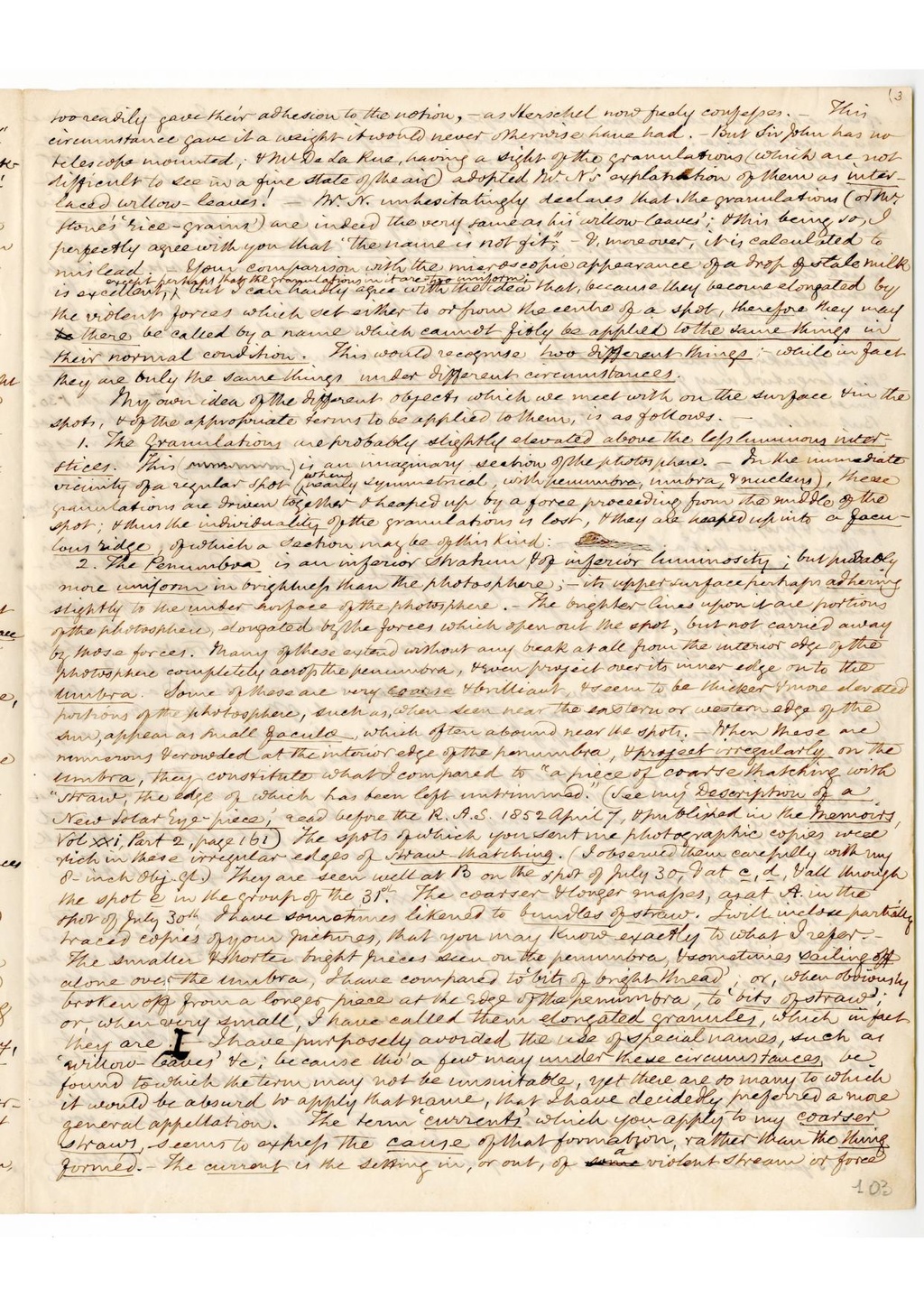too readily gave their adhesion to the notion, as Herschel now freely confesses. This
circumstance gave it a weight it would never otherwise have had. But Sir John has no
__leswho mounted; and Mr. De La Rue, having a sight of the granulations (which are not
difficult to see in a fine state of the air) adopted Mr. N's explanation of them as inter-
laced willow-leaves! Mr. N. unhesitatingly declares that the granulations (or Mr.
Stone's 'rice-grains') are indeed the very same as his 'willow-leaves'; and this being so, I
perfectly agree with you that 'the name is not fit"; and, moreover, it is calculated to mislead. Your comparison with the microscopic appearance of a drop of stale milk
is excellent, except perhaps that the granulations in it are too uniform; but I can hardly agree with the idea that, because they become elongated by
the violent forces which set either to or from the centre of a spot, therefore they may
there be called by a name which cannot fitly be applied to the same things in
their normal condition. This would recognise two different things; while in fact
they are truly the same things under different circumstances.
My own idea of the different objects which we meet with on the surface and in the
spots, and of the appropriate terms to be applied to them, is as follows.
1. The granulations are probably slightly elevated about the less luminous inter-
stices. This () is an imaginary section of the photosphere. In the immediate
vicinity of a regular spot (where nearly symmetrical, with penumbra, umbra, and nucleus), these
granulations are together and heaped up by a force proceeding from the middle of the
spot; and thus the individuality of the granulations is lost, and they are heaped up into a facu-
lous ridge, of which a section may be of this kind:
2. The Penumbra
Page:ASC 1865 09 06 13-52.pdf/3
From GATE
Revision as of 22:49, 18 September 2020 by Maria Sermersheim (talk | contribs)
This page has not been proofread
